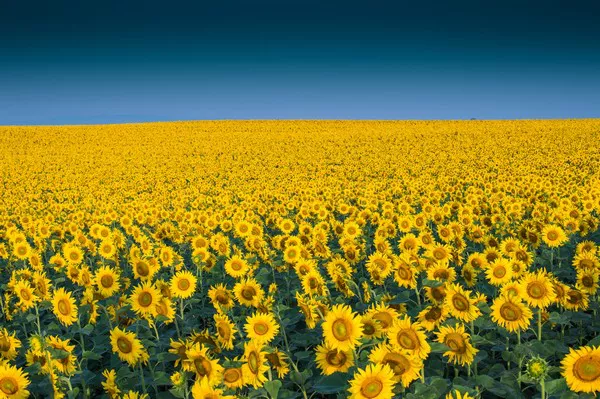Mammoth sunflowers (Helianthus annuus) are a striking addition to any garden, standing tall and proud with their impressive size and vibrant yellow flowers. These giants of the plant world are not only visually appealing but also fascinating to grow.
Understanding Mammoth Sunflowers
Mammoth sunflowers are a specific cultivar of the common sunflower, known for their exceptional height and large flower heads. These giants can reach heights of 12 feet or more, with flower heads that can span over a foot in diameter. Mammoth sunflowers belong to the Helianthus genus and are native to North America.
Choosing the Right Seeds
Selecting the right seeds is the first and crucial step in growing mammoth sunflowers. When choosing mammoth sunflower seeds, consider the following factors:
Variety: There are several varieties of mammoth sunflowers available, each with slightly different characteristics. Varieties like ‘Russian Giant’ and ‘Mammoth Grey Stripe’ are popular choices, known for their height and impressive flower heads.
Freshness: Ensure that the seeds you choose are fresh and of high quality. Older or improperly stored seeds may have a lower germination rate.
Source: Purchase seeds from a reputable supplier or nursery to ensure you’re getting authentic mammoth sunflower seeds.
Planting Mammoth Sunflowers
Mammoth sunflowers require a bit of planning and the right growing conditions to thrive. Here are the steps to successfully plant mammoth sunflowers:
Timing: Mammoth sunflowers are warm-season annuals. They should be planted when the danger of frost has passed, and the soil temperature is consistently above 50°F (10°C). This typically occurs in late spring or early summer, depending on your location.
Location: Choose a spot in your garden that receives full sun for at least 6-8 hours a day. These sunflowers are known for their height, so make sure they won’t shade other plants.
Soil Preparation: Mammoth sunflowers prefer well-draining, loamy soil with a slightly acidic to neutral pH. Prepare the soil by adding organic matter like compost to improve fertility and drainage.
Spacing: Plant your mammoth sunflower seeds at least 6 inches apart to allow room for their immense growth. Rows should be spaced about 30 inches apart.
Planting Depth: Plant the seeds about 1 inch deep in the soil. Water the soil thoroughly after planting.
Mammoth Sunflower Care
Mammoth sunflowers require consistent care and attention to reach their impressive heights and produce large, beautiful flower heads. Here are the key aspects of care to focus on:
Watering: Keep the soil consistently moist but not waterlogged, especially during the germination and early growth stages. Once established, mammoth sunflowers are somewhat drought-tolerant and may not require as frequent watering.
Fertilization: Sunflowers are light feeders, but a balanced, all-purpose fertilizer can be applied during planting and as needed throughout the growing season. Be cautious not to over-fertilize, as excessive nitrogen can lead to tall, weak stalks.
Support: As your mammoth sunflowers grow, they may require support to prevent them from bending or breaking under their weight. Staking or using garden twine can help keep them upright.
Pest and Disease Management: Keep an eye out for common garden pests like aphids and slugs. If infestations occur, address them promptly with appropriate pest control methods. Mammoth sunflowers are relatively disease-resistant.
Deadheading: Deadheading is the practice of removing spent flowers to encourage continuous blooming. However, mammoth sunflowers are typically grown for their large, single flower heads, so deadheading is not necessary.
Pruning: Pruning is generally not needed for mammoth sunflowers. However, you can remove any damaged or diseased leaves or stems to maintain the plant’s health.
Giant Sunflower Fun Facts
Before we delve further into the cultivation of mammoth sunflowers, here are some intriguing facts about these remarkable plants:
Sunflower Faces: Mammoth sunflowers exhibit a fascinating characteristic known as heliotropism, where young sunflower heads track the movement of the sun across the sky. As they mature, the flower heads generally face eastward, greeting the morning sun.
Seed Production: Mammoth sunflowers are not only visually stunning but also valuable for their seeds. The large seeds are delicious when roasted and are a favorite snack for humans and wildlife alike.
Pollinator Attraction: Sunflowers are excellent pollinator plants, attracting bees and other beneficial insects to your garden. Their vibrant yellow petals and abundant nectar provide a rich food source for pollinators.
Sunflower Oil: Sunflowers are also a source of sunflower oil, commonly used for cooking and in various commercial products.
Propagation and Seed Collection
If you wish to grow mammoth sunflowers in subsequent years, you can collect and store seeds from your mature sunflowers. Here’s how to do it:
Wait until the flower head matures and the seeds begin to dry. You’ll notice the disc florets in the center turn from yellow to brown, and the seeds will plump up.
Cut the mature flower head with about 12 inches of stem attached.
Hang the flower head upside down in a dry, well-ventilated area for several weeks to ensure the seeds are fully dry and won’t mold during storage.
Remove the seeds from the flower head by rubbing them gently or by using your fingers. Store the seeds in a cool, dry place in an airtight container.
Label the container with the date and variety of sunflower seeds to keep track of your collection.
Conclusion
Growing mammoth sunflowers is a rewarding and captivating experience that will brighten your garden and provide an excellent source of admiration and conversation. These giants of the plant world are a testament to the beauty and resilience of nature. With proper care and attention, you can enjoy their impressive size, vibrant yellow flowers, and unique characteristics. Whether you plant them for their striking aesthetics, as a source of seeds, or to attract pollinators, mammoth sunflowers are sure to make a grand statement in your garden. Follow the steps and tips outlined in this guide, and you’ll be well on your way to growing mammoth sunflowers that will leave everyone in awe.


